“Objectified” | Oct 19 – Dec 23, 2013 | Luis De Jesus | 2685 S La Cienega Blvd. Los Angeles, CA 90034 | http://www.luisdejesus.com
Margie Livingston feels religious when it comes to creating her paintings. She is like a woman in a temple saying her prayers and serving her god of art from a place completely sacred and separated from her ego. Livingston is separated from the notion of any expectancies for receiving any immediate earthly rewards in exchange for creating her art. She does her art only for the sake of that certain belief within her that by endless devotion while creating, she would arrive in a place of spaciousness, becoming grand and evolved, and by giving all of herself to her art, in exchange, she will receive all that her art has to give back to her. When I was walking around the gallery, examining each one of the paintings by Livingston hanging on the wall, I could easily detect the artist’s complete command on her emotions. This talent has resulted in her ability for taming her subjects, her colors and her paint brush, which allows her to easily direct and lead every line and every brush stroke to where she exactly wanted them them to be. Looking at Livingston’s paintings, one can see that her brush is a very powerful tool in her hand. She uses it not only to express herself but also to show us her command on her inner self, which is evident in all the masses of tangled and untangled lines on her canvases. The lines are strong, direct, solid and orderly – an indication of the the artist’s one-to-one fight with the dragon of raw emotions in her, which she has quite evidently been able to masterfully tame. For so many artists, once they lose the war within and once they fail to tame the dragon inside, they lose the command needed to express what they really want to say fully in their art. In Margie Livingston’s paintings and painted objects, all the lines have an invisible leash and lock on them, and the artist certainly holds the key to them in her hand, as though she is walking around with a dragon on a leash. Margie Livingston’s art certainly is the kind which, the more you know about it and the more you learn of the process it took for every piece to complete, you understand and you appreciate more. I think it is necessary to view them with the awareness of the meticulous and tedious work process with which it took for her to create each layer of these paintings, made by interlaying acrylic paint, layer by layer. In creating her art, certainly nothing was accidental nor just based on the magic of the moment. Everything was masterfully planned and masterfully executed and controlled. Go see the show before it closes. You would love it too.
Margie Livingston is first and foremost a painter. Her desire to liberate painting from illusion and free herself from the limitations of traditional painting pushed her to articulate and embrace an entirely new approach to making work. Employing strategies and methods associated with the construction and carpentry trade, she builds threedimensionalpaint objects that are made entirely out of acrylic paint, allowing her to directly translate the phenomena of space, light, color and gravity upon these hybrid structures. Solid blocks and logs of paint and sheets of paint reconstituted into “wood” products, such as waferboard and paneling, investigate the properties of paint pushed into three-dimensions. Inevitably layered with personal history, Livingston’s work also has art-historical connections. In the case of the paint objects — simulacra of building products that experiment with paint’s materiality, render the conventions of minimalism in three-dimensional painted form, push paint into the domain of sculpture, nod to the ready-made, and use nonmimetic color to highlight their own artificiality — the obvious links are not just with Frank Stella’s paintings but also with the work of Jackson Pollock, Donald Judd, Carl Andre, and Lynda Benglis. Livingston’s paint objects also subvert, challenge, and recontextualize this history. The gesture of individual expression, the “mythic/heroic”, and even the autobiographical and craft bias of much historical feminist artwork is sliced by industrial machinery or obliterated by layers of accident, collaboration, and carpentry skills that draw attention away from the hand of the artist and toward the process itself. And, yet, these objects’ indebtedness to earlier artists and late-modernist art movements is only one of their collective dimensions. Another is their evocation, however oblique, of the natural world’s ravaged state. Margie Livingston has been nominated for the 2013 Louis Comfort Tiffany Foundation Biennial Award. She received her M.F.A. in painting from the University of Washington and was awarded a Fulbright Scholarship in 2001, a period she spent living and working in Berlin. Other awards include a 2011 Artist-in-Residence at Los Angeles Contemporary Exhibitions (LACE), the 2010 Neddy Fellowship from the Benkhe Foundation and the 2010 Arts Innovator Award from Artist Trust (funded by the Chihuly Foundation), a 2008 Artist-in-Residence at the Shenzhen Fine Art Institute, and the 2006 Betty Bowen Memorial Award. She has been featured in solo and group exhibitions at Los Angeles Contemporary Exhibitions; Henry Art Gallery, Seattle Art Museum, and Tacoma Art Museum, Washington State; Shenzhen Fine Art Institute, China: Kunstruimte 09, Groningen, The Netherlands; PROGR Zentrum fur Kulturproduktion, Bern, Switzerland; and Amerika Haus-Berlin, Germany, among others. Margie Livingston’s work is included in the permanent collections of the Shenzhen Fine Art Institute, Seattle Art Museum, Tacoma Art Museum, Eugenio Lopez Collection, Joel and Zoe Dictrow Collection, and numerous other private and public collections.
Tags: Art, Art Review, Art Reviews, Luis De Jesus, Margie Livingston, Objectified, Paintings
Posted in Art Reviews, Reviews |

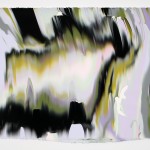
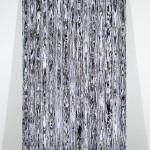
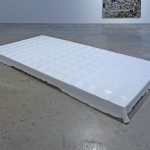
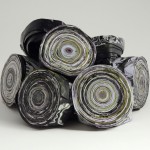
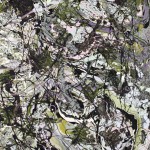
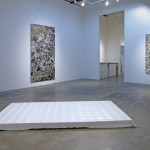

Leave a Reply